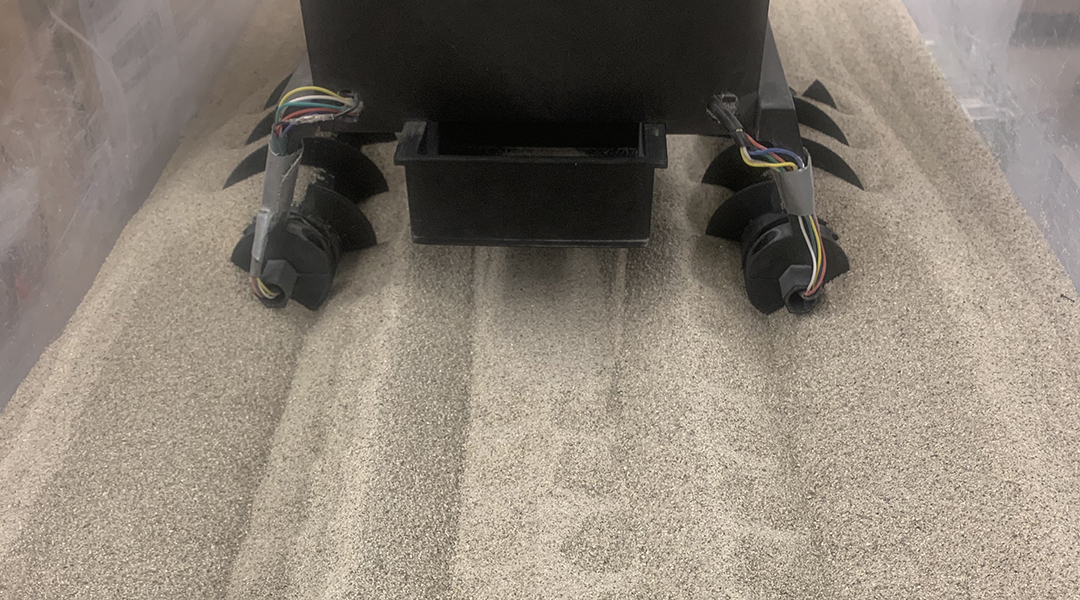One of the most exciting future avenues for humanity is the possibility of becoming a space-faring civilization capable of building settlements on other planets or celestial bodies in our solar system.
However, this enthralling future cannot be achieved if all the equipment and materials needed to found these outposts must be sent from Earth. Even with falling launch costs, it will never be economical. Instead, these space settlements must be built using raw materials that are collected and processed at the target destination.
In pursuit of this goal, the Arizona State BIRTH lab, led by Professor Hamid Marvi, has developed an alternative type of robot to collect raw materials on other worlds; one powered by Archimedes screws.
Local surface material on other planets or asteroids, otherwise known as regolith, is made up of many useful substances, such as ice and metal oxides. Some local materials might be in places beyond the reach of robots and would thus require humans to collect them, for example, ice in the shadowed craters of the Lunar South Pole. However, moving around on planetary surfaces can be dangerous — astronauts can be exposed to high radiation levels and are at risk of puncturing their suit — not to mention that space suits are very difficult to move around in. For these reasons, the extraction of the local regolith will be done mostly using robotic vehicles to minimize the need for humans to collect resources.
Most of the robotic vehicles that have been proposed to dig up regolith use wheels or tracks as a means of getting around. Due to the decreased gravity on planets like Mars, generating traction is more difficult than on Earth. Robots currently in use, such as the NASA Mars Rover, have been developed to navigate these alien terrains, but there is still the potential issue that they might become stuck or might have difficulty when it comes to mining.
“Based on our prior research, we have found that screw propelled vehicles provide extremely high traction even in low-gravity environments,” Marvi said. “Screw propelled vehicles are able to dig into the loose regolith found on these planetary surfaces and propel themselves forward, while simultaneously digging up the compacted soil so that it is easy to collect.” Marvi also indicated that using an screw-propelled vehicle eliminates the need for heavy and complex drilling equipment, which reduces the overall weight of the vehicle, making it cheaper to launch.
In order to study the efficacy of a screw-propelled excavation robot, the CASPER (Counter-rotating Archimedes Screw-Propelled Excavation Rover) prototype was constructed. CASPER was built using the 3D-printed polymer, PETG, due to its high strength and low cost. Altogether, the robot’s parts took several days to print and assemble.
CASPER features four Archimedes screw pontoons for propulsion, as well as a simple actuated ramp system for excavation. It was then put through its paces over through excavation tests set up in the BIRTH Lab’s silica sand testbed — a long rectangular acrylic box, and each test involved the robot moving across the sand, collecting material along the way.
This simple prototype was meant to serve as a proof-of-concept device but managed to achieve promising results. In comparison to state-of-the-art terrestrial excavation vehicles, such as backhoes used in construction, CASPER had very similar excavation performance while only using a fraction of the mass and power that the other systems required.
“This is a very promising initial result from such a rudimentary prototype,” said Marvi. “With additional development and optimization, this architecture could leverage its unique capabilities to be very effective in off-world applications.”
Some promising avenues of future work include evolving the design from a plastic prototype to a metal rover fitted with state-of-the-art electronics and communications equipment, capable of surviving the harsh environments of planetary surfaces. In the future, many robots based on the CASPER design could be deployed to autonomously collect regolith and deposit it at processing centers so that it could be used to develop permanent human settlements on other worlds.
Reference: Marko Green, et al., ‘Regolith Excavation Performance of a Screw-propelled Vehicle, Advanced Intelligent Systems‘ (2021). DOI: 10.1002/aisy.202100125

















